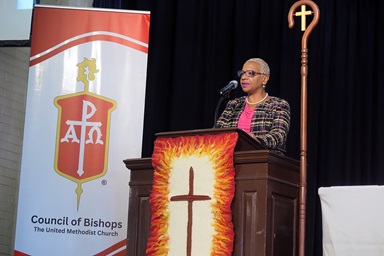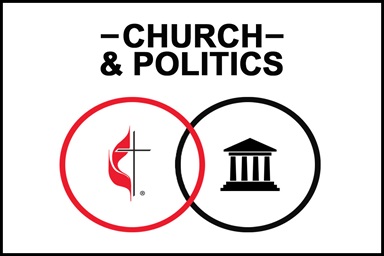Ross Faris was well-loved and well-known for his love of gardening.
After his death last fall, members of the Indianapolis community streamed through the doors of North United Methodist Church, packing the pews on a cold day to remember the man who, by all accounts, would have shied from the attention.
Years ago, starting with a few seeds, Faris turned his Indianapolis yard into a flourishing garden. His young children sold the fresh produce at the end of the driveway. Over time, those few rows turned into an overflowing center for fresh food and good company, and "Your Neighbor's Garden" was officially formed, built lovingly around a sense of community that felt more like family.
"He had so much joy in those gardens," recalled David Owen, a longtime friend, "and no matter where Ross was, he always sought to improve things."
And he did. The legacy Faris left is visible today in North United Methodist Church's farmers market, which has an impact on an entire community.
Eleven years ago, not many options for fresh produce existed for those in the neighborhood nestled along Meridian Street, which stretches through the middle of Indiana's capital city. When North United Methodist members discovered the rate of diabetes within a one-mile radius was steadily increasing, they enlisted the help of Faris to build a farmers market program. The church members hoped the accessibility to fresh fruits and vegetables would lead to a healthier neighborhood.
"Ross was very instrumental in the program," said the Rev. Brian Williams. "Long before locally grown food became popular, he had already been doing it and so he was there to help get us up and running."
Flourishing market
Open spring through fall, the market often fills at 4 p.m. every Thursday with more than 400 people from the local community. On average, 20 vendors sell their products, ranging from fruits and vegetables to soy-based candles and homemade soaps.
Tips gleaned from farmers market and community garden organizers
- Be clear about whom you are trying to help. Are you trying to feed people or help them to realize their potential?
- Partner. Churches and organizations in the United States and around the world are working to feed the hungry. Find partners.
- Don't overburden your volunteers. Part of the reason community gardens declined in some areas was because the volunteers were not always the hungry people in the community. Despite wanting to help others, they were overwhelmed with the amount of work and small numbers of volunteers.
- Look at people with fresh eyes. The Rev. Mike Mather of Broadway United Methodist Church noted the growers used to be viewed as needy people but, when looked at correctly as "children of God with talents and valuable skills," they were able to create their own path and flourish.
Joel O'Neil, the market's manager, is happy to see the program continually growing to include more than just fresh produce.
"At our market," O'Neil said, "we allow vendors to sell what meets our requirements &ellipsis; that it's a made-in-Indiana, consumable product. The woman who used to make soap to sell used all natural ingredients and made it right out of her home."
O'Neil, a volunteer, is joined by just a few other adult volunteers who keep the program organized and functioning. But, some of the greatest help comes from student volunteers - sometimes as many as eight - from the International School of Indiana, a prekindergarten through 12th-grade private school, O'Neil said.
"The kids are great," he said. "They are there to help translate, which is something that is really helpful in the diverse neighborhood. They also help vendors stock and direct people. Just great to have them around."
In the past, the U.S. federal program Women, Infants and Children had a table at the market, where shoppers could apply for assistance and, if qualified, receive a voucher immediately to use at the market. However, changes in staffing and resources have moved the application process to the WIC office.
Even with assistance, it isn't always enough to feed a hungry family. Last year, the church set up a Dollar-for-Dollar-Match Program to boost the spending amount families receive through WIC.
"Each family is given something like $18 for the whole market season," Williams said. "We know that isn't going to do much for you when it comes to fresh produce and so the church has stepped in to double that, sometimes even triple it."
More help for the hungry
In addition to the farmers market, North has operated a soup kitchen, Bread 'n' Bowl, for the last 25 years.
"It started with a few members making peanut butter and jelly sandwiches for a couple of kids," Williams said. "It became really popular and all of a sudden they were making peanut butter and jelly sandwiches for a lot of kids."
The meals, served three days a week, are now full hot meals, with a take-home option available. On average, North United Methodist serves more than 50 people each day and sometimes more than 100 during winter months.
Broadway United Methodist, less than two miles south of North, reached out to help the hungry in a different way after community gardens in the area began to decline.
Almost seven years ago, a "roving listener" began to speak with people in the immediate area of the church to help identify the gifts and passions of people within their community.
"We found that there were over 40 talented gardeners in a very small area around us," said the Rev. Mike Mather, senior pastor at the church. "And so we hired a few young people to talk with the gardeners, to find out how much they grew, what they grew and if they would be interested in selling their product."
At the same time, volunteers within the church began a conversation with local institutions, businesses and associations, seeking out those interested in purchasing from the newly identified group of gardeners.
Soon, the produce began to sell. Fresh vegetables and fruits were sold at church on Sunday mornings after worship and restaurants received delivery of fresh local food. The partnerships continue to grow, as the group prepares for participation in a farmers market at Methodist Hospital, a major inner-city facility, later this summer.
The growers receive the money. Mather said the church just started the conversation among all of them, and the growers did the work.
Mather emphasized that by allowing the group to flourish on its own, the church helped the members to develop a sustainable way to help themselves.
*Puckey is an Indianapolis freelance writer.
News contact: Maggie Hillery, Nashville, Tenn., (615) 742-5470 or [email protected].
Like what you're reading? Support the ministry of UM News! Your support ensures the latest denominational news, dynamic stories and informative articles will continue to connect our global community. Make a tax-deductible donation at ResourceUMC.org/GiveUMCom.




